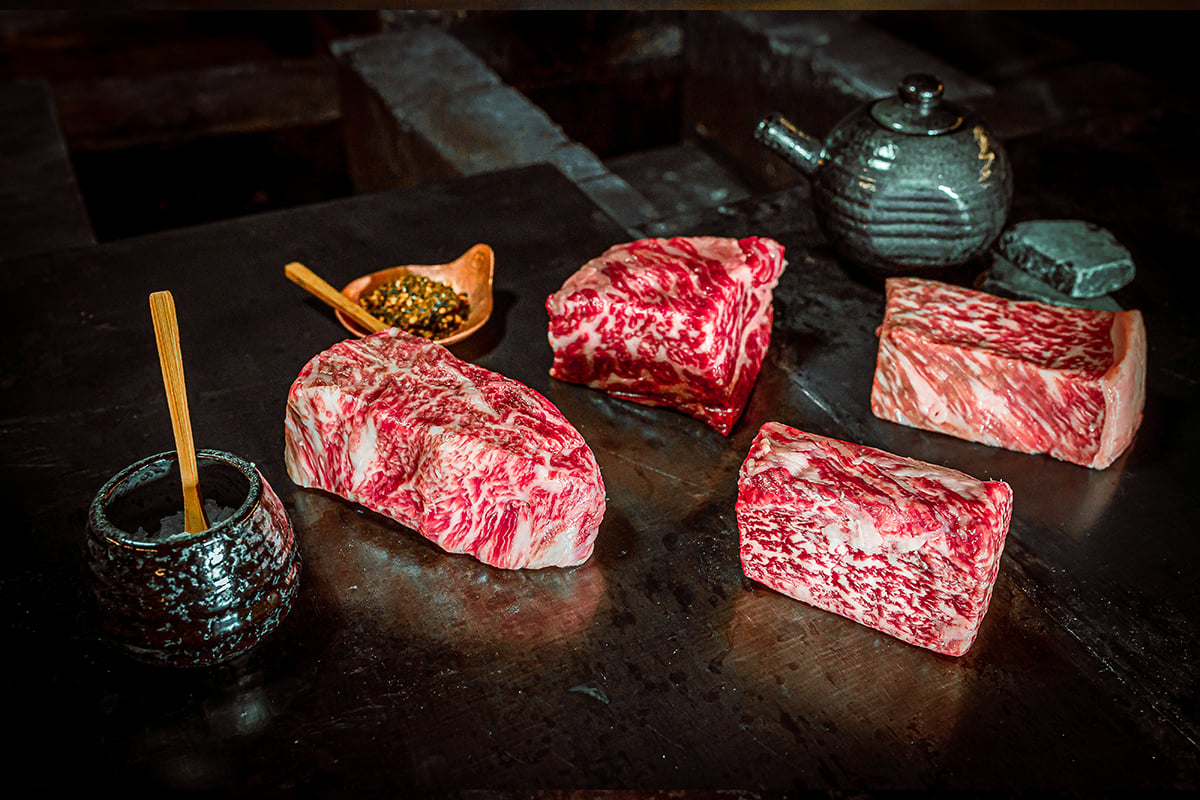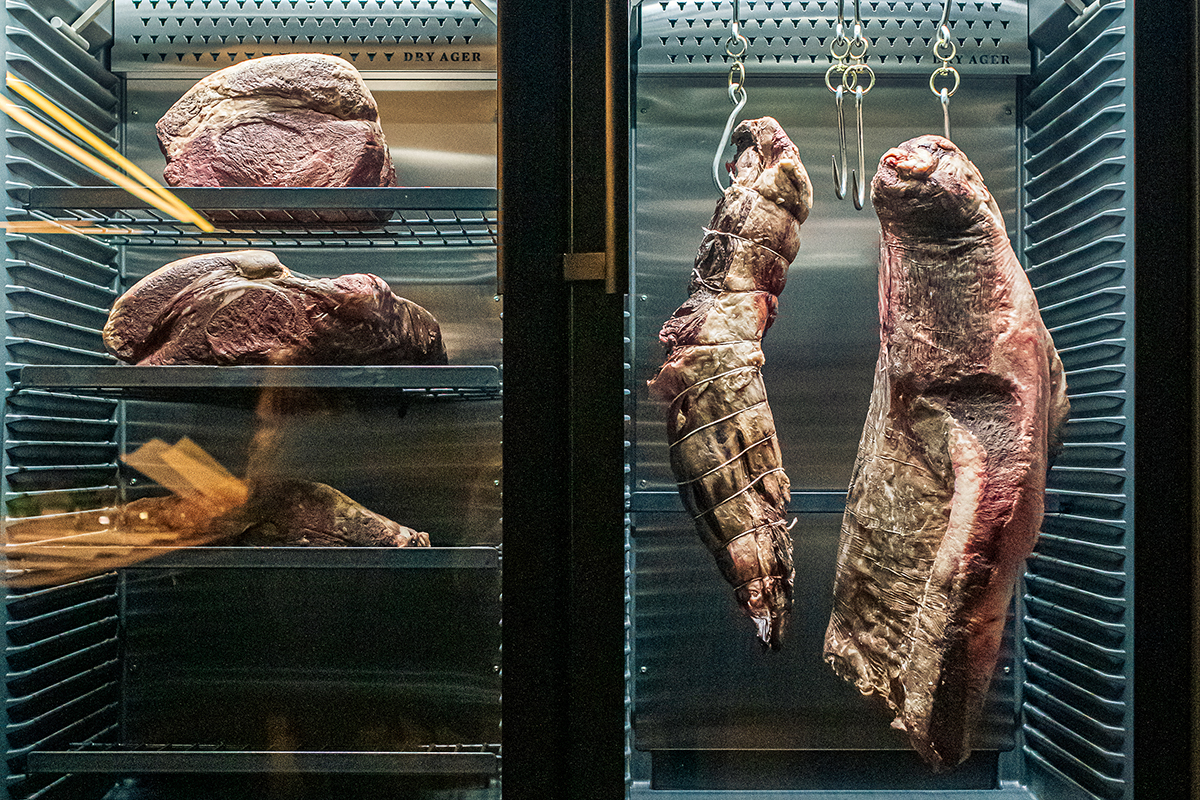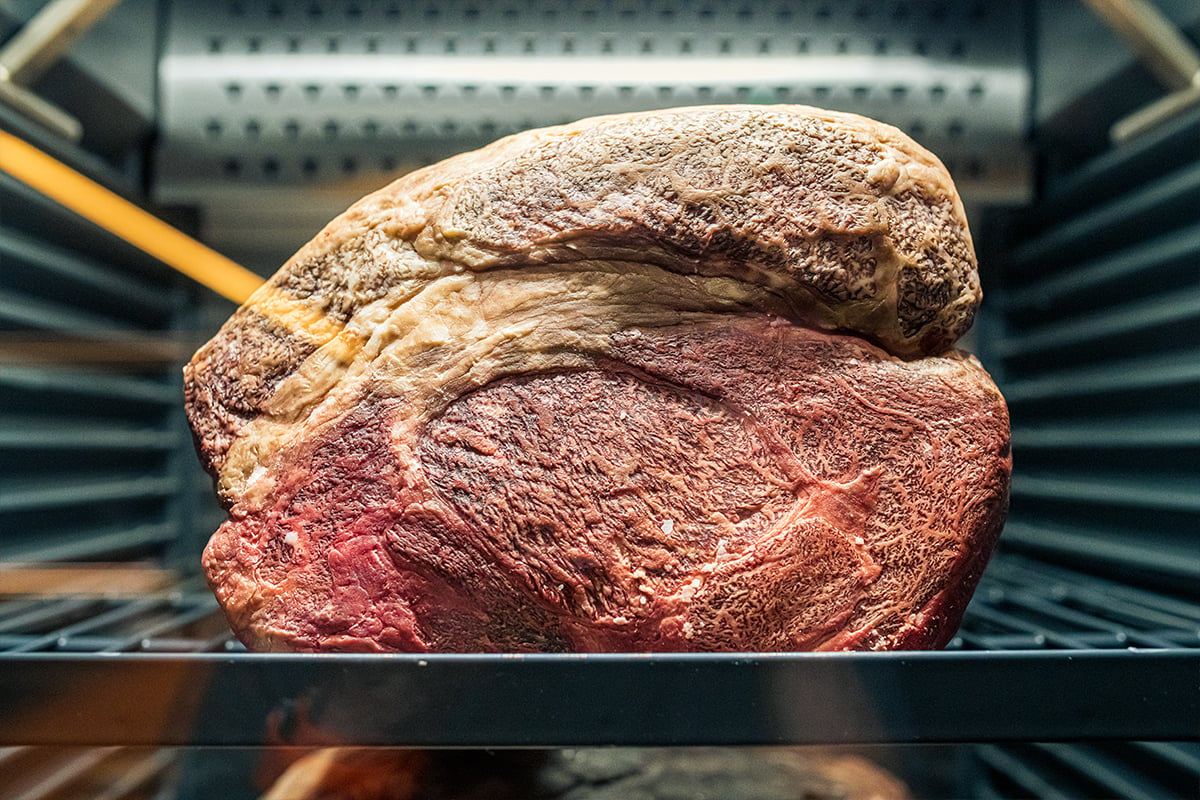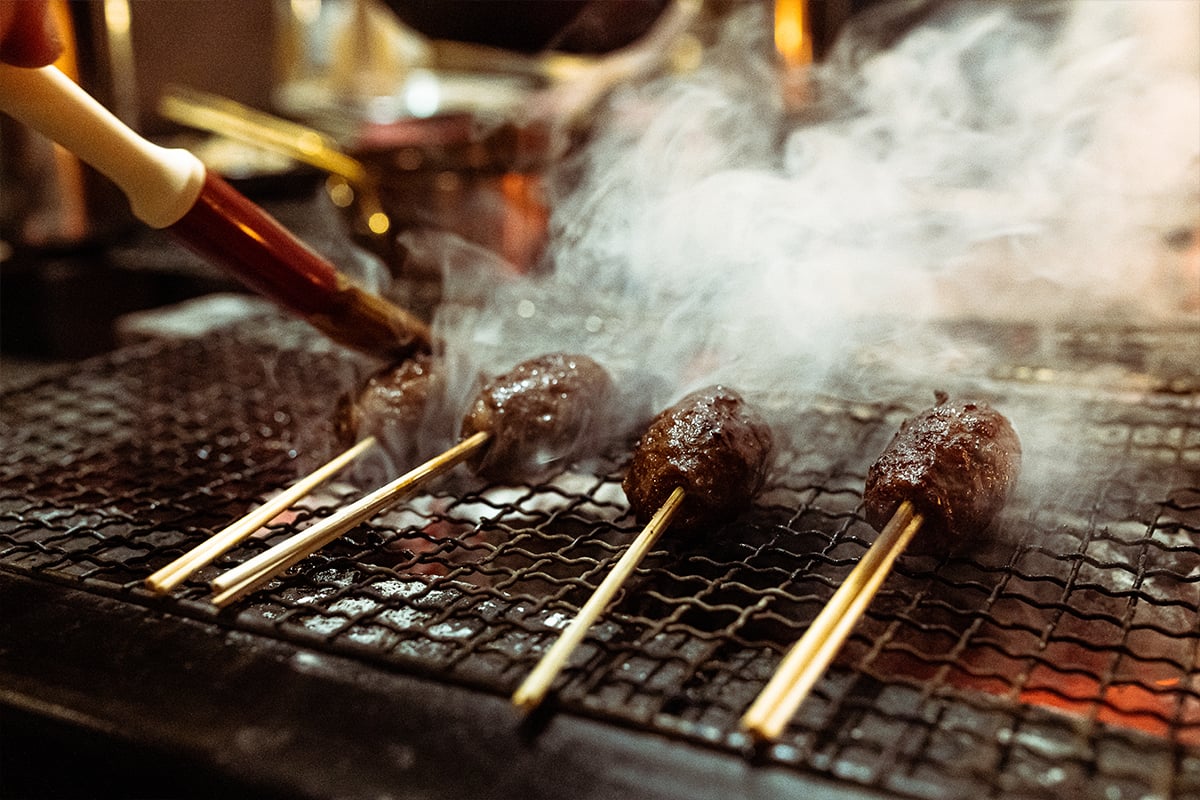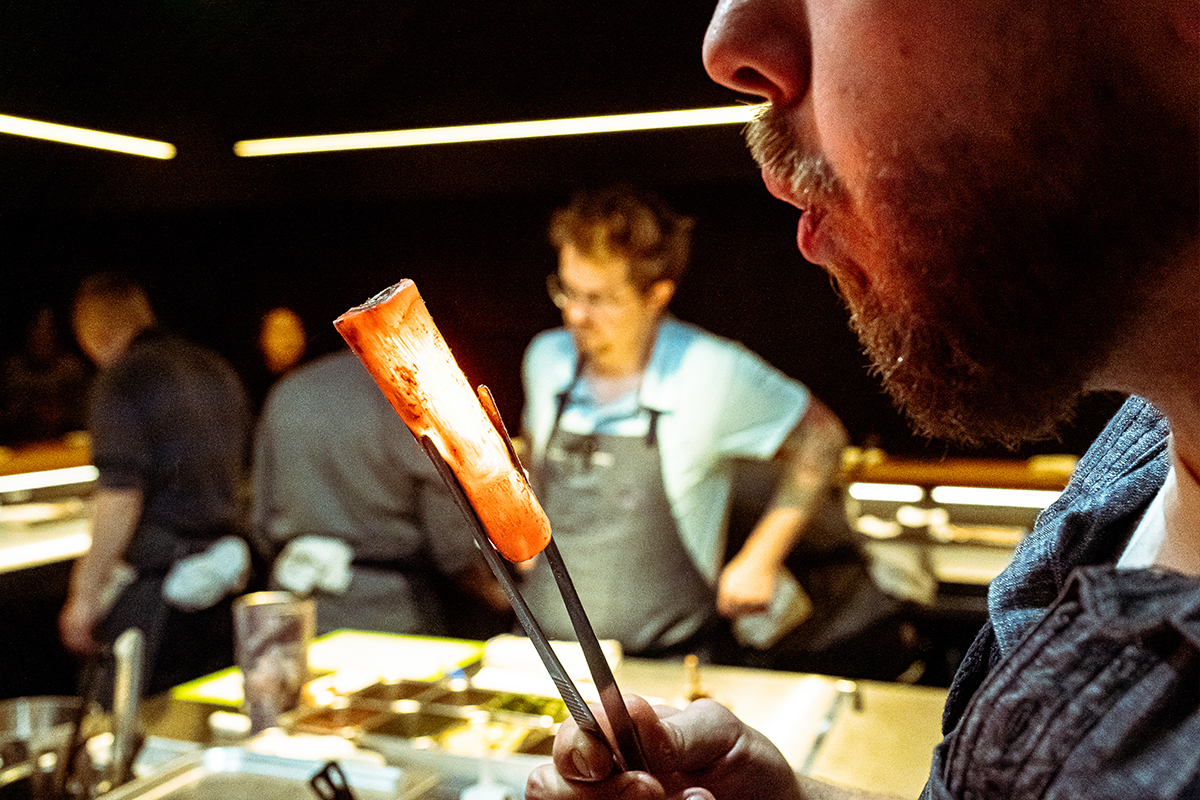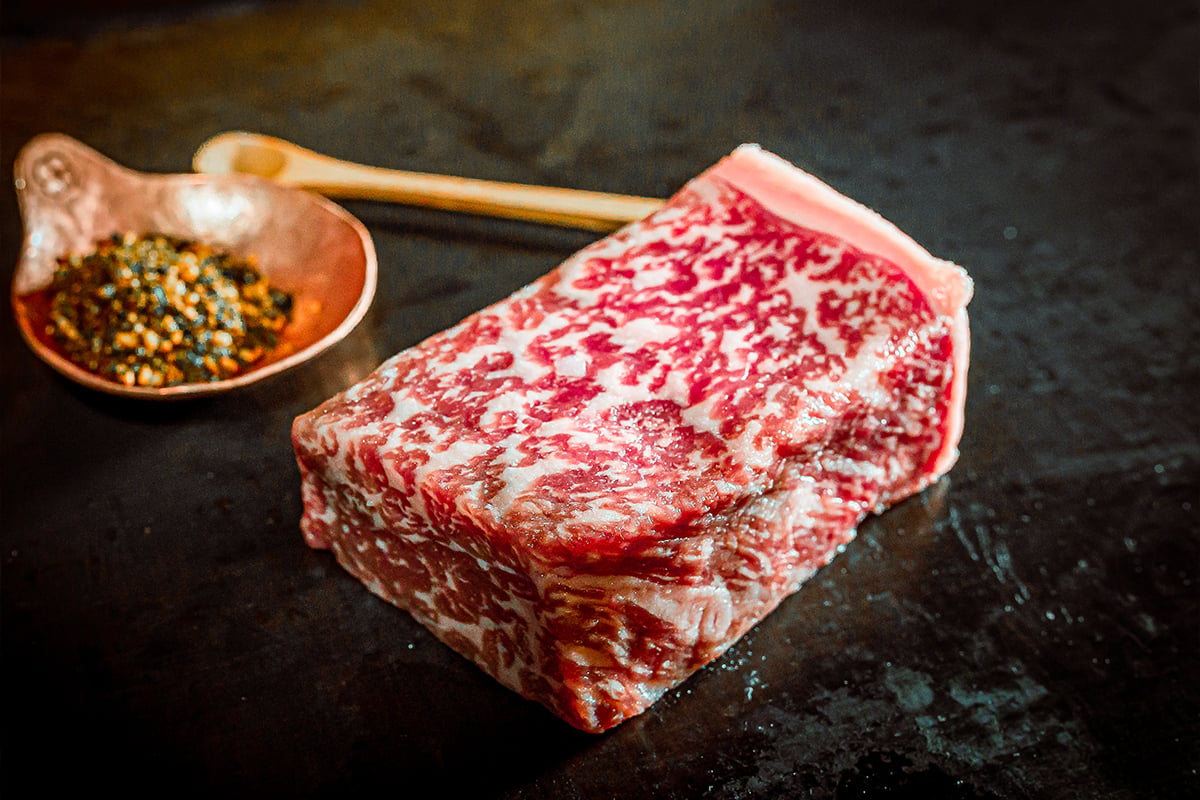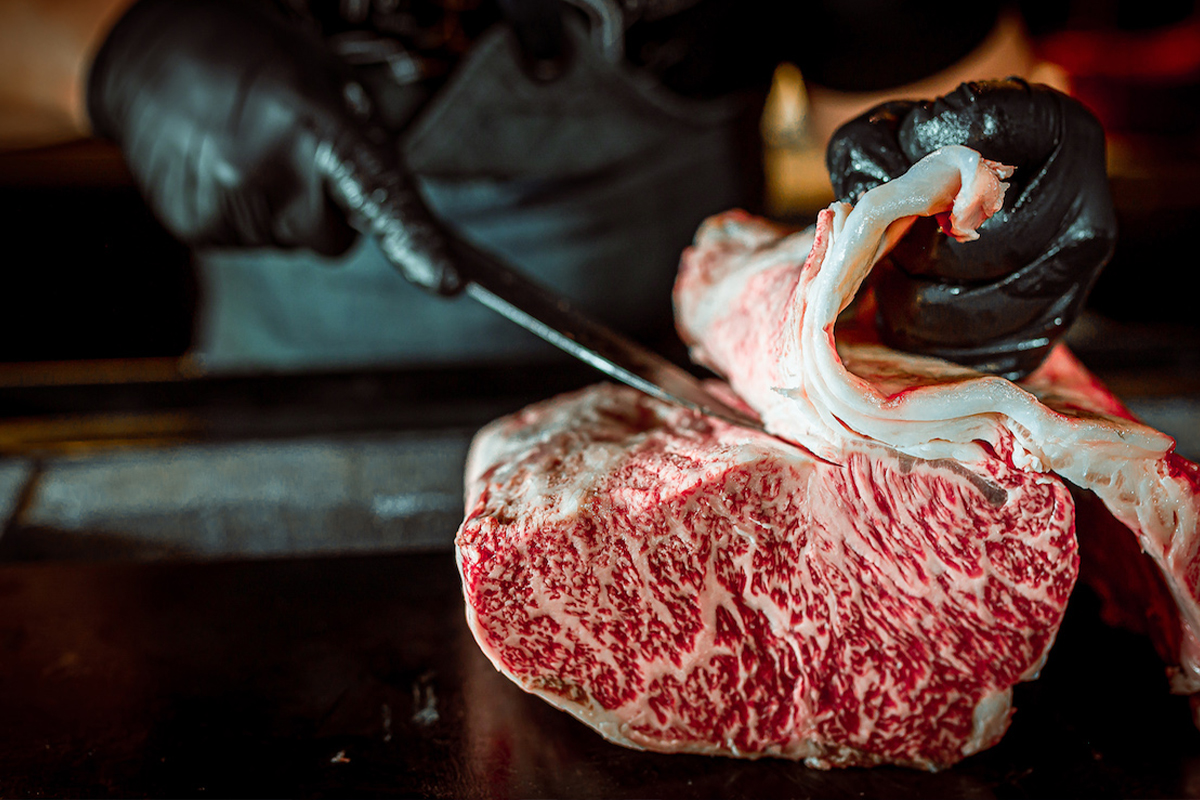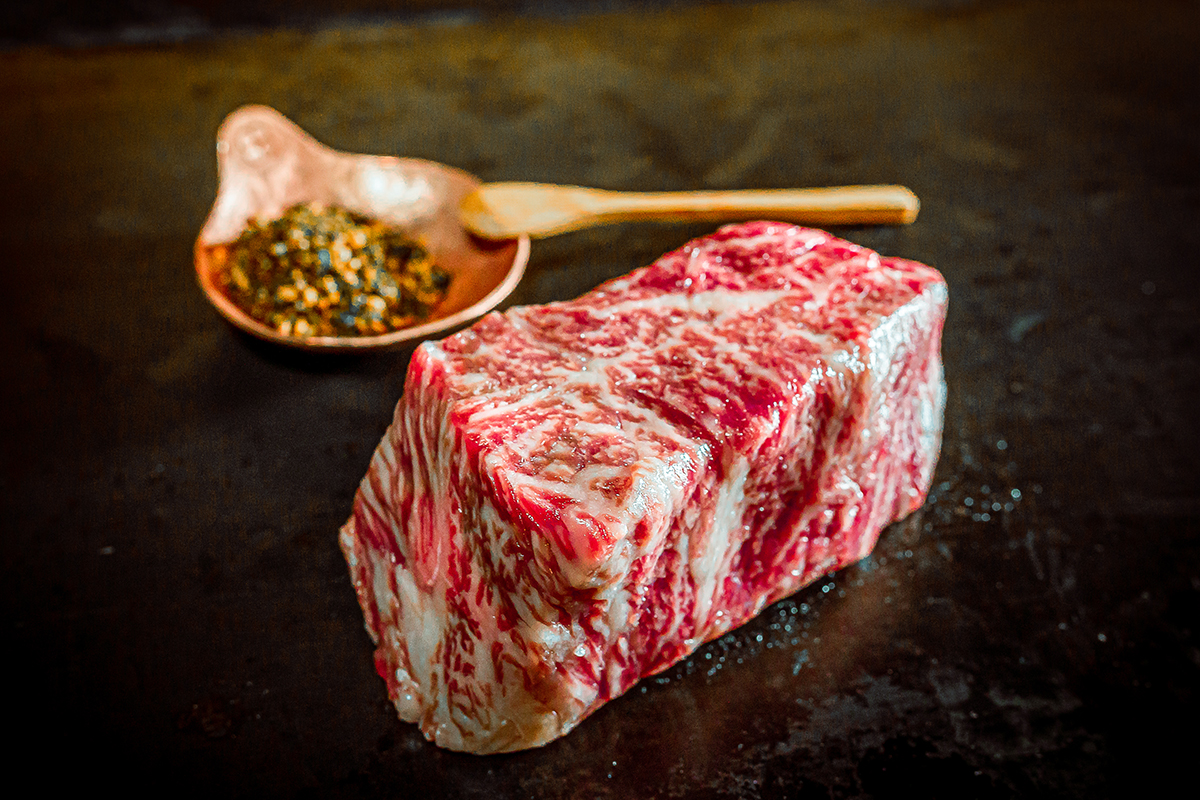There has been much attention on the world of Wagyu beef, Japan’s famously high-end and premium offering. And, as the favoured cattle rose to global fame, so did the legends around it.
These myths were mostly to do with the raising of the animal, from the cattle being fed beer and played classical music to receiving daily massages from its owners; the rumours were never short of imagination.
“To compare a Wagyu steak to a normal steak is comparing heaven and earth.” – David Bae
However, despite the hearsay, Wagyu grew to become the ultimate beef-tasting experience.
It is now regarded as a dish of elegance and grandeur among restaurants and gourmet chefs for its richly marbled texture. It has remained as one of Japan’s most iconic food products.
What’s in a name?
For more than 2,000 years, Wagyu (which translates to ‘Japanese cow’) cattle were raised for labour and farming.
It was only in 1867 when the ban on eating meat was lifted in Japan, that consumption of Kobe beef – Wagyu beef from the Tajima strain of Japanese Black cattle – slowly began.

Although consumption of meat remained low until after World War II, Kobe beef grew in popularity and extended its global reach through exports in the 1980s and 1990s.
The beef comes from four breeds of native Japanese cows that were crossed with Western cattle in the early 20th century: Japanese Black, Japanese Brown, Japanese Shorthorn and Japanese Polled cattle. These breeds were raised over several generations to maximise their organic unsaturated fat.
Although there are more than 300 types of Wagyu available, the most notable cuts are from only 10 regions. Matsusaka Wagyu from the Mie Prefecture is one of the most expensive cuts made from virgin female cows. In 2002, one Matsusaka cow sold for around $US400,000.
However, for most consumers, the best known cut of Wagyu is Kobe beef, which comes from the city of Kobe in Hyogo Prefecture and is made exclusively from castrated bulls.
Not all Wagyu is equal
The high-grade Wagyu, respected for its marbling and buttery taste, can cost up to US$200 per pound, while the cows can sell for as much as US$30,000, according to Business Insider.
Yet, not all Wagyu is created equal. Japan Meat Grading Association classifies the yield according to the amount of high-quality meat on each animal. Grade A is the highest yield and grade C is the lowest.
The grading system shows yield grade (A, B or C) and meat quality grade (1–5). These two indicators show the grading of beef, for example A5 is the best yield and meat quality. Also, the higher the grade, the more marbling the meat contains, which provides that ‘melt in-your-mouth’ experience.
Interest and demand
Ittoryu Gozu owner and Founder of A-Five Meats Marc Zimmerman has more than 20 years of industry experience in Wagyu importation, culinary mastery and fine dining.
His culinary background includes working at restaurants including Nobu, Okada, Restaurant Guy Savoy, Social House and Lutèce.
“Wagyu is a beautiful animal,” Marc shares. “The fact that we’re able to import and use full sets of Wagyu to make this precious breed more affordable for everyone is special.”
Marc’s goal is simple: make the finest cuts of Wagyu beef accessible to all consumers.
“We started A-Five Meats to bring quality meat, chilled (not frozen), from across the world, to diners across America,” he says.
“I’ve travelled throughout Japan visiting small farms across various prefectures, and we have seen how different farmers treat the animals they raise. Our goal was to introduce these nuances to each diner and chef in the country.”
While in Australia – another nation where the premium beef has gained a loyal following – Osawa Enterprises, a Japanese Wagyu provider, is busy ensuring consumers get the best of the best.
“Now for the first time, there is renewed interest in Japanese Wagyu, and many people want to discover the differences between Australian and Japanese Wagyu.” – Kimio Osawa
“Japanese wagyu was imported from the US into Australia in 1991, and it has taken years of dedication from committed US and Australian farmers to increase the quality and standard of Wagyu beef outside of Japan,” explains Kimio Osawa, Osawa Enterprises Founder and Japanese butcher.
“Marbling is one of the most critical aspects of Wagyu beef that most people talk about,” he says. “But, when I started in 2000 (and for the following five years), the marbling score of premium Australian beef was inconsistent, and an average high marble score was around three.
“Not to mention, it is my point of view that, at the time, consumers thought the best beef on the market was Black Angus beef.”
Kimio noticed a change in consumer interest about 15 years ago, when Wagyu herds were getting bigger, and there were more producers launching Wagyu businesses.
“The Wagyu beef marbling became higher and closer to the real Japanese Wagyu,” he tells. “Since then, Wagyu steak has been considered the premium beef in Australia.”
The other reason for its growth is accessibility. “Initially, many steakhouses, high-end restaurants and some Asian restaurants (predominantly Japanese) were the main purchases of Wagyu in Australia,” Kimio says.
“But around 10 years ago, major supermarkets started selling Wagyu and it became more affordable to the mass market.
“The fact that we’re able to import and use full sets of Wagyu to make this precious breed more affordable for everyone is special.” – Marc Zimmerman
“Now for the first time, there is renewed interest in Japanese Wagyu, and many people want to discover the differences between Australian and Japanese Wagyu,” he notes.
Beef like no other
“To compare a Wagyu steak to a normal steak is comparing heaven and earth,” says David Bae, owner of Sydney’s Marble BBQ restaurant (the name Marble comes from the marbling of Wagyu).
“The buttery, nutty and sweetness of Wagyu cannot be compared. Due to the popularity of Korean and Japanese barbecues, more and more people are getting exposed to it.”
Marble serves two types of Wagyu striploin. The first is a crossbreed MB9+ (Australian Wagyu grading score) that’s served on a bed of garlic-buttered Koshihikari rice with a Korean-style sweet soy-sesame oil sauce.
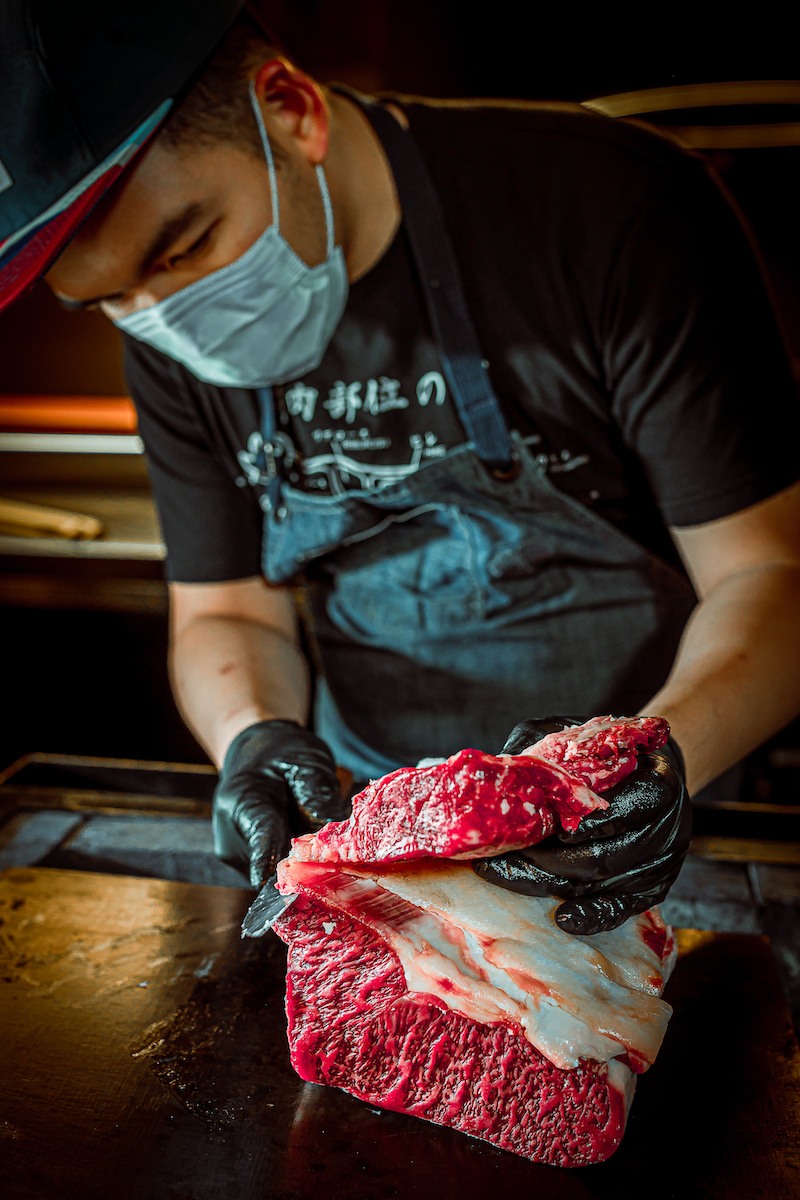
The second type is the restaurant’s trophy dish: Fullblood Wagyu Striploin MB9+ with just salt on the side. The Fullblood Wagyu Striploin comes from a Japanese 100% full-blood bull and a 100% full-blood female cow with no crossbreeding.
David explains that Australian Wagyu is mainly a cross between 50% Black Angus and 50% Japanese Black genetic lines. But the full blood has 100% Japanese Wagyu genetic lines and makes up less than 5% of Australian Wagyu.
The best Wagyu picks
A-Five Meats
The Classic Provision Pack has been a hit with customers. Marc Zimmerman and his team then introduced the Wagyu Provision Pack and Heritage Pack due to popular guest feedback.
Marble BBQ
The Wagyu sirloin dishes and the Wagyu tartare on a nori crisp, which takes 12 hours to prepare.
Osawa Enterprises
The most popular cut of meat at Osawa Enterprises is the thinly sliced Wagyu beef.
The slices are available across the spectrum starting at A$12.50 for a 500g tray of Australian Wagyu with a Beef Marbling Score (BMS) of 3-5. Osawa also sells a 500g tray of Kobe beef Wagyu slice, BMS 11, for A$110.
Wagyu beef at home
Marc Zimmerman
“One of the simplest and most pure ways – as well as one of my favourites – of working with Wagyu is kushiyaki,” Marc shares.
The beef is diced into cubes, skewer and cooked over Japanese binchotan charcoal. The meat can also be prepared over a cast iron or home grill.

The coals are fanned while cooking, which allows for the high heat to provide a crispy texture to the exterior of the beef while the interior remains fleshy and soft.
The beef is brushed with tare (a Japanese dipping sauce) throughout the cooking process.
The sugars in the tare begin to caramelise on the meat, while the shoyu (a type of soy sauce) and bonito (dried, fermented, and smoked skipjack tuna) add additional umami.
David Bae
“Cook for two minutes on each side of a frypan and eat it medium rare with a pinch of salt,” David says. “If you have a robata or barbecue unit, nothing beats cooking a Wagyu steak over a bed of charcoal.”

